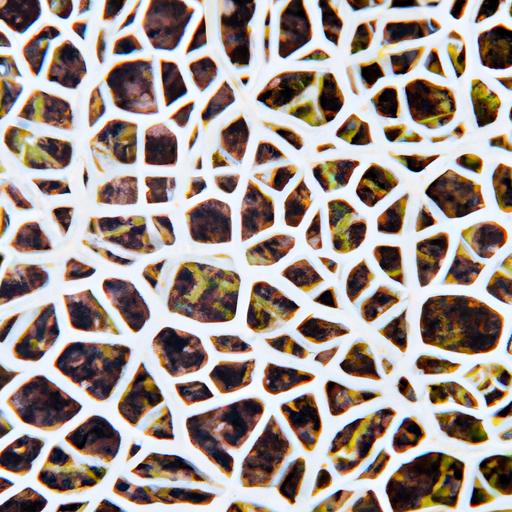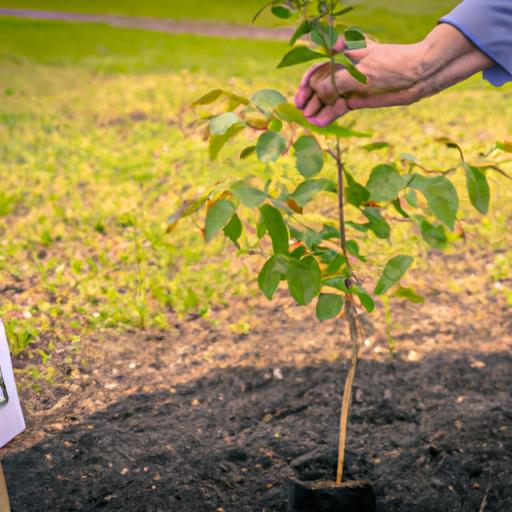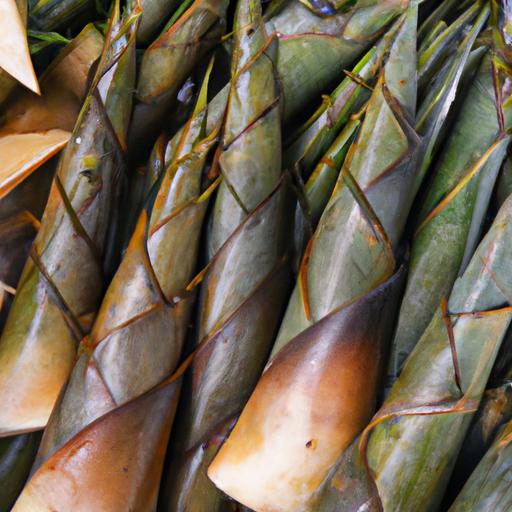Does Plants Have a Cell Wall? Exploring the Importance of Cell Walls in Plants
Plants, the magnificent beings that adorn our world, hold secrets within their intricate structures. Have you ever wondered about the significance of cells in plants? And more specifically, do plants have a cell wall? In this article, we will embark on a fascinating journey to unravel the mysteries of plant cells and explore the role of cell walls in their existence.
The Significance of Cells in Plants
Cells form the fundamental building blocks of life, and plants are no exception. These remarkable organisms are composed of numerous cells that work together harmoniously to ensure their survival and growth. Cells in plants play a pivotal role in various essential functions, including nutrient absorption, energy production, and reproduction. They are the fundamental units that make life in plants possible.
Brief Explanation of Cell Walls
Now, let’s delve deeper into the captivating world of plant cells by examining their unique feature – the cell wall. The cell wall is a rigid and protective structure that surrounds plant cells. It acts as a sturdy fortress, providing structural support and protection against external forces. Just like the walls of a fortress shield its inhabitants, the cell wall safeguards the delicate inner components of the cell, safeguarding it from potential harm.
As we progress further into this article, we will explore the function and composition of cell walls in plants, shedding light on their importance. So, let’s embark on this enlightening journey together and discover the secrets that lie within the magnificent world of plant cells and their remarkable cell walls.
Understanding Plant Cells
Plants, with their intricate and fascinating structures, possess cells that are the building blocks of their existence. To gain a deeper understanding of plant cells, let’s explore their structure and compare them to their animal cell counterparts.
Overview of Plant Cell Structure
Plant cells exhibit a unique architecture that sets them apart from animal cells. At the core of every plant cell lies the nucleus, the control center that houses the genetic material. Surrounding the nucleus, we find the cytoplasm, a gel-like substance that houses various organelles responsible for specific cellular functions. These organelles include mitochondria, responsible for energy production, and chloroplasts, essential for photosynthesis.
One of the distinguishing features of plant cells is the presence of a cell wall. As mentioned earlier, the cell wall acts as a protective layer, providing structural support and preventing the cell from collapsing under its weight. In addition to the cell wall, plant cells possess a cell membrane, a thin barrier that regulates the movement of substances in and out of the cell.
Comparison between Plant and Animal Cells
While plant and animal cells share some similarities, such as the presence of a nucleus and various organelles, there are notable differences that set them apart. Unlike plant cells, animal cells lack a cell wall. Instead, they possess a flexible cell membrane that allows for greater movement and interaction with the environment.
Another significant difference lies in the presence of chloroplasts. Animal cells do not contain chloroplasts, as they do not engage in photosynthesis. This highlights the unique ability of plant cells to convert sunlight into energy, a process vital for their survival.
By understanding the structure and characteristics of plant cells, we gain insights into the intricate workings of these remarkable organisms. In the next section, we will delve deeper into the function of cell walls in plants, uncovering their vital role in supporting plant life.
The Function of Cell Walls in Plants
In the realm of plants, cell walls serve as more than just a physical barrier. They play a vital role in the overall functioning and survival of these remarkable organisms. Let’s delve into the multifaceted functions of cell walls in plants.
Providing Structural Support and Protection
One of the primary functions of cell walls in plants is to provide structural support. Just like the framework of a building, cell walls lend strength and rigidity to the plant’s overall structure. They allow plants to stand tall and upright, even in the face of the elements. Imagine a majestic tree with its branches swaying in the wind – it is the cell walls that grant it the resilience to withstand external pressures.
Cell walls also act as a protective shield, safeguarding the delicate cellular components within. They serve as a barrier against physical damage, pathogens, and even herbivores. In this way, cell walls act as a fortress, defending the plant from potential threats and ensuring its longevity.
Regulating Water Balance
Water is essential for the survival of plants, and cell walls play a crucial role in regulating its balance. The cell wall acts as a gatekeeper, controlling the movement of water in and out of the cell. Through a process known as osmosis, cell walls maintain the optimal water balance within the plant cells.
Cell walls also enable plants to retain water, preventing excessive loss through transpiration. This is particularly important in arid environments, where water scarcity is a constant challenge. The ability of cell walls to regulate water balance contributes to the overall health and resilience of plants, allowing them to thrive in various conditions.
Understanding the vital functions of cell walls in plants provides us with a glimpse into the intricate mechanisms that drive their growth and survival. In the next section, we will explore the composition of cell walls, unraveling the elements that make them a robust and essential component of plant cells.
Cell Wall Composition
The composition of plant cell walls is a fascinating subject that sheds light on the intricacies of these remarkable structures. Let’s delve into the components that make up these sturdy fortifications, unveiling the secrets within.
Cellulose as a Major Constituent
At the core of plant cell walls lies cellulose, a key component that provides strength and rigidity. Cellulose is a complex carbohydrate composed of long chains of glucose molecules tightly bound together. These chains intertwine, forming a lattice-like structure that contributes to the cell wall’s robustness. Just as the framework of a building ensures its stability, cellulose serves as the foundational framework of plant cell walls.
Other Components such as Hemicellulose and Pectin
Cellulose may be the main player, but it is not the sole contributor to the composition of plant cell walls. Hemicellulose, another group of complex carbohydrates, adds flexibility and elasticity to the cell wall structure. It acts as a supportive matrix, enhancing the overall resilience of plant cells.
In addition to cellulose and hemicellulose, plant cell walls also encompass pectin, a gel-like substance composed of polysaccharides. Pectin acts as a cementing agent, binding cells together and contributing to their adhesion. This allows plant tissues to maintain their integrity, even in the face of external pressures.
The intricate combination of cellulose, hemicellulose, and pectin forms the foundation of plant cell walls, creating a formidable barrier that protects and supports the delicate cellular components within. As we continue our exploration, we will delve into whether all plants possess cell walls or if exceptions exist, unraveling the complexities of plant biology.
Do All Plants Have Cell Walls?
Examining the Presence of Cell Walls in Various Plant Groups
Now that we have gained a deeper understanding of the significance of cell walls in plants, let’s explore whether all plants possess these protective structures. As we delve into the vast realm of plant diversity, we discover intriguing variations in cell wall presence among different plant groups.
Differentiating Between Plants with and Without Cell Walls
While it is true that the majority of plants have cell walls, there are exceptions to this rule. One distinguishing factor lies in the classification of plants as either vascular or non-vascular. Vascular plants, such as ferns, conifers, and flowering plants, typically possess well-developed cell walls. These cell walls provide rigidity and support, allowing these plants to grow tall and thrive in diverse environments.
On the other hand, non-vascular plants, including mosses and liverworts, exhibit a simpler structure and lack fully developed cell walls. Instead, they possess a cell wall-like structure known as a cell plate, which serves a similar purpose in providing support and protection for these plants.
Examples of Plant Species Lacking Cell Walls
To further illustrate the diversity in cell wall presence, let’s explore some specific plant species that do not possess cell walls. One intriguing example is the group of algae, which includes seaweeds. Algae exhibit a wide range of structural variations, with some species having cell walls, while others, like certain types of red and brown algae, lack them.
Another fascinating example is found in the fungal kingdom. Fungi, despite being distinct from plants, also lack cell walls in their cellular structure. Instead, they possess a unique cell wall composition known as chitin, which provides strength and protection.
As we navigate through the vast array of plant groups, we uncover captivating variations in cell wall presence. This diversity highlights the remarkable adaptability and evolution of plants throughout the ages.
Stay tuned as we journey towards the conclusion of this article, where we will recap the importance of cell walls in plants and reflect upon the captivating world of plant cells.
Conclusion
In conclusion, we have unraveled the mysteries surrounding the presence of cell walls in plants. Through our exploration, we have discovered that cell walls are an essential component of plant cells, providing structural support, protection, and regulating water balance. The composition of cell walls, primarily consisting of cellulose, hemicellulose, and pectin, contributes to their unique characteristics and functions.
While it is true that not all plants have cell walls, they remain a defining feature of most plant species. The presence or absence of cell walls in plants can vary across different groups and species, showcasing the diverse adaptations that have evolved over time.
Understanding the importance of cell walls in plants gives us a deeper appreciation for the complexity and resilience of these incredible organisms. They are not merely static structures but dynamic entities that enable plants to thrive in various environments.
As we continue to explore the wonders of the natural world, let us marvel at the intricacies of plant cells and their remarkable cell walls. They are a testament to the ingenuity and adaptability of nature, reminding us of the interconnectedness of all living things.
So, the next time you gaze upon a beautiful plant, take a moment to ponder the hidden world within its cells and appreciate the incredible role that cell walls play in its existence.






